Three-way valve on the heating system: operation, selection rules, diagram and installation
To constantly maintain a comfortable thermal balance in the house, an element such as a three-way valve on the heating system that evenly distributes heat to all rooms is included in the heating circuit.
Despite the importance of this unit, it does not differ in complex design. Let's look at the design features and principles of operation of the three-way valve. What rules should be followed when choosing a device and what nuances are present in its installation.
The content of the article:
Features of a three-way valve
Water entering the radiator has a certain temperature, which is often not possible to influence. The three-way valve adjusts by changing not the temperature, but the amount of liquid.
This makes it possible, without changing the area of the radiator, to supply the necessary amount of heat to the rooms, but only within the boundaries of the system power.
Separation and mixing devices
Visually, a three-way valve resembles a tee, but performs completely different functions. Such a unit, equipped with a thermostat, belongs to shutoff valves and is one of its main elements.
There are two types of these devices: separation and mixing.
The first is used when the coolant needs to be fed simultaneously in several directions. In fact, the assembly is a mixer that forms a stable flow with a set temperature. Mount it in a network through which heated air is supplied, and in water supply systems.
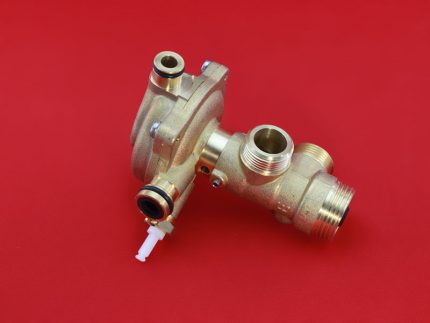
Products of the second type serve to combine flows and their thermoregulation. For inlet streams having different temperatures, two holes are provided, and for their exit - one.They are used when installing underfloor heating to prevent surface overheating.
A three-way valve and temperature controller are available separately. For autonomous heating systems, nevertheless, the purchase of a design with a thermostat is considered a more rational and effective solution.
The design of three-way cranes
By design, the valves are divided into seat and rotary. The principle of operation of the first is based on the rhythmic movement of the rod vertically - the "stem-saddle" adjustment scheme. This view applies to mixing valves. Often the control is carried out by an electromechanical drive.
A key element of the pivot structure is the rotating sector. During movement, the stem acts on the ball valve, and it partially or completely cuts off the flow of coolant. This adjustment pattern is called a “ball-socket”.
These devices have increased wear resistance. They are adapted to large temperature differences and are classified as valves. In private homes, where water is consumed in relatively small quantities, they can function as mixers.
A feature of the mixing valve is the presence of one outlet and two inlets. It is designed to control the temperature of the working fluid by combining high and low temperature flows. With appropriate installation, the product can also separate streams.
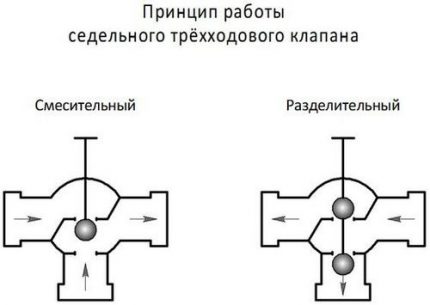
The three-way valve of the separation type is used when it is necessary to supply hot coolant in several directions.
All models of such cranes differ from each other in some ways:
- shutter mechanics - it can be either tension or stuffing box;
- stub shape - there are L, T, S-shaped;
- shutter type - there is a cylindrical, spherical, conical;
- circuit connection - using a coupling, flange, by welding, etc .;
- way of managing - automatic, semi-automatic, manual.
The mixing device is equipped with a rod located in the center, a ball valve in it alone. It closes at the right time the shutter of the inlet.
In split type devices, the stem is equipped with two valves mounted in the outlet pipes.
It functions in a slightly different way. The operation of the three-way valve after a detailed analysis of its design becomes clearer.

The case of this type of product is cast. It is made of brass or bronze with galvanic nickel plating. It performs both protective and decorative functions. To connect to the pipeline there are threaded bends - only three pieces. The type of threaded connection depends on the model selected.
The optimum pressure in the heating system for stable valve operation is 10 kg / cm². Exceeding this value may cause problems.
There are restrictions on temperature indicators - 95º for boilers, 110º - for solar panels. Permissible temperature control of the coolant in different models is in the range of 20-60º. Productivity ranges from 1.6–2.5 m3/ h
The principle of operation of the device
By installing a three-way mixing valve, it is possible to ensure that the temperature of the liquid at the outlet has a value within the established limits.
The principle of operation for the closed heating system, and for the FGP system is the same. The only difference is that in the first case, the coolant evenly transfers heat from the source to the radiators, and in the second, it transfers warm water to household appliances.
Until the temperature-sensitive element reaches a certain temperature, the coolant is supplied from the front pipe and arrives unhindered to the right. When the working element reaches a temperature higher than the set value, it expands.
This entails moving the valve vertically downward and, as a result, blocking the entry path of the heated coolant from below. Next opens the left pipe for supplying cold liquid.

Mixing a cold liquid with a hot one balances the temperature. The temperature-sensitive element takes its previous shape, and the damper - its original position.
If the three-way valve is installed in the return circuit, then the process should occur in the opposite sequence. When the liquid cools, a direct path opens for hot water from the boiler.
Drive gear
The type of actuator may also be different for the valves. The drive can be either hydraulic or electromechanical, pneumatic, manual.
The electromechanical drive is divided into types, the most common of which is a simple thermostatic. It functions as a result of expansion of a liquid with a thermoactive element in its composition. The result is pressure on the stem. This is an easily removable design used in products installed in household systems.
The next option is a drive with a thermostatic head equipped with a temperature sensitive element. The device is supplemented by a remote temperature sensor located directly in the pipeline. A capillary tube connects it to the drive.
This type of adjustment is considered the most accurate. If desired, a simple thermostatic drive can easily be replaced with a thermostatic head.
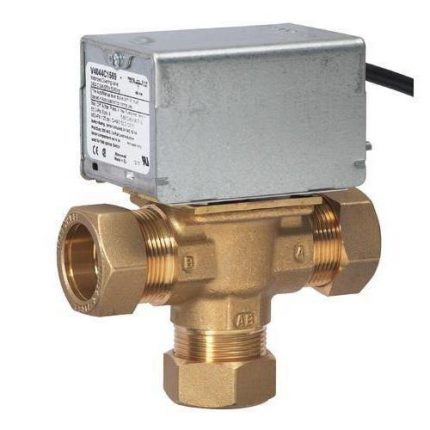
There is an option for a three-way valve with an electric actuator. It is controlled by a controller equipped with temperature sensors and issuing commands to the main mechanism. A simplified version of a drive with a controller is a servo drive.
It controls the valve directly. The simplest drive is manual. Here, the adjustment is carried out by turning the plastic cap having a threaded connection. Its bottom is in contact with the end of the rod. By twisting or unscrewing the spool is moved.
The presence of an electric or servo drive allows you to program the temperature mode with the time of day orientation. Initially, a three-way valve does not include a drive mechanism. It is purchased separately based on the characteristics of a particular heating system. You can use the product in any heating system.
Where are three-way valves used?
There are valves of this type in different designs. They are included in the wiring diagram. warm floors to ensure uniform heating of all its sections and eliminate overheating of individual branches.
In the case of a solid fuel boiler, condensation is often observed in its chamber. Installing a three-way crane will help to deal with it.
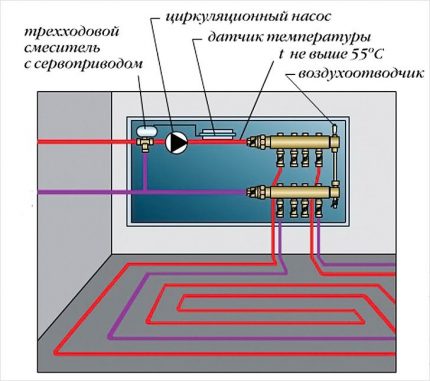
A three-way device works effectively in the heating system, when there is a need to connect the DHW circuit and separate the heat fluxes.
The use of a valve in the radiator harness eliminates the need for bypass. Installing it on the return creates the conditions for a short circuit device.
The nuances of choosing a fixture
The following recommendations are common when choosing a suitable three-way valve:
- Preferred reputable manufacturers. Often, low-quality valves from unknown companies are found on the market.
- Copper or brass products have greater wear resistance.
- Manual control is more reliable, but less functional.
The key point is the technical parameters of the system in which it is supposed to be installed. Such characteristics are taken into account: pressure level, maximum temperature of the coolant at the installation point of the device, allowable pressure drop, volume of water passing through the valve.
Only a valve with the right throughput will work well. To do this, you need to compare the performance of your plumbing system with the bandwidth coefficient of the device. It is mandatory marked on each model.
For rooms of limited area, such as a bathroom, it is irrational to choose an expensive valve with a thermal mixer.
On large areas with underfloor heating, a device with automatic temperature control is required. A guideline for selection should also be product compliance. GOST 12894-2005.
The cost can be very different, it all depends on the manufacturer.
In country houses with installed solid fuel boiler the heating circuit is not very complex. A three-way valve of a simplified design is quite suitable here.
It operates autonomously and does not have a thermal head, sensor, or even a rod. The thermostatic element that controls its operation is tuned to a specific temperature and is located in the housing.
Three-way instrument manufacturers
There is a large assortment of three-way valves on the market from both reputable and unknown manufacturers. The model can be selected after the general parameters of the product are determined.
The first place in the ranking of sales is occupied by the valves of the Swedish company Esbe. This is a fairly well-known brand, so three-way products are reliable and durable.
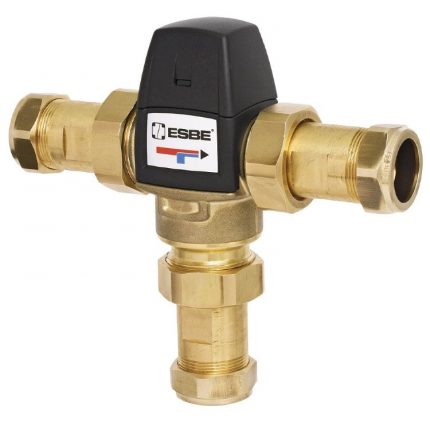
Korean consumers are known for their quality three-way valves. Navien. They should be purchased in the presence of a boiler of the same company.
Greater adjustment accuracy is achieved by installing a Danish device Danfoss. It works completely automatically.
Valves are distinguished by good quality and affordable cost. Valtecmade jointly by specialists from Italy and Russia.
Efficient US company products Hanivel (Honeywell). These valves have a simple design, easy to install.
Product Installation Features
During the installation of three-way valves there are many nuances. Uninterrupted functioning of the heating system depends on their consideration. The manufacturer attaches instructions to each valve, the observance of which will subsequently avoid many troubles.
General installation recommendations
The main thing is to initially install the valve in the correct position, guided by prompts indicated by arrows on the body. Pointers indicate the trajectory of the water flow.
A symbol indicates a forward stroke, B - a perpendicular or bypass direction, AB - a combined input or output.
Based on the direction, there are two models of valves:
- with a symmetric or T-shaped circuit;
- with asymmetric or L-shaped.
When mounting along the first of them, fluid enters the valve through the end holes. It leaves through the center after mixing.
In the second embodiment, a warm stream enters from the end, and a cold stream enters from below.The output after mixing the multi-temperature fluid occurs through the second end.

The second important point when installing the mixing valve is that you cannot position it with the actuator or thermostatic head down. Before starting work, preparation is required: water is blocked in front of the installation point. Next, check the pipeline for the presence of residues in it, which can cause the valve gasket to fail.
The main thing is to choose a place for installation so that the valve has access. You may need to check or dismantle it later. All of this requires free space.
Mixing valve insert
When inserting a three-way mixing valve into the district heating system, there may be several options. The choice of scheme depends on the nature of the connection of the heating system.
When, under the conditions of operation of the boiler, such a phenomenon as overheating of the coolant in the return is permissible, overpressure necessarily occurs. In this case, mount a jumper throttling the excess pressure. It is installed in parallel with the valve mix.
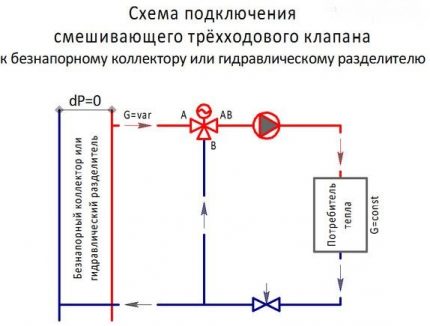
The diagram in the photo is a guarantee of quality control of the system parameters. If a three-way valve is connected directly to the boiler, which is most often the case in autonomous heating systems, a balancing valve insert is required.
If we neglect the recommendation regarding the installation of a balancing device, significant changes in the flow rate of the working fluid, depending on the position of the stem, can occur in port AB.
Connection according to the above diagram does not guarantee the absence of coolant circulation through the source. To achieve this, it is necessary to additionally connect a hydraulic isolator and a circulation pump in its circuit.
The mixing valve is also mounted in order to separate the flows. The need for this arises when it is unacceptable to completely isolate the source circuit, but bypassing the liquid into the return is possible. Most often, this option is used in the presence of an autonomous boiler room.

You must be aware that some models may cause vibration and noise. This is due to inconsistent flow directions in the pipeline and the mixing product. Because of this, the pressure on the valve may drop below the permissible value.
Mounting the separation device
When the temperature of the source is higher than the consumer needs, a flow separating valve is included in the circuit. In this case, at a constant flow rate both in the boiler circuit and by the consumer, the superheated liquid will not come to the latter.
For the circuit to work, the presence of both circuits is required the pump.
Based on the foregoing, we can summarize the general recommendations:
- When installing any three-way valve, pressure gauges are installed before and after it.
- To avoid any impurities, a filter is mounted in front of the product.
- The body of the device must not be subjected to any load.
- Good regulation must be ensured by inserting in front of the valve devices that restrict the overpressure.
- During installation, the valve should not be above the actuator.
It is also necessary to withstand straight sections recommended by the manufacturer before and after the product. Failure to comply with this rule will entail a change in the declared specifications.The warranty on the device will not be valid.
Conclusions and useful video on the topic
Nuances of installation, accounting of which guarantees the correct operation of the valve:
Details of the installation of the valve when installing a warm floor:
A node in the heating system, such as a thermostatic three-way valve, is necessary, but not in all cases. Its presence is a guarantee of rational use of the coolant, which allows to consume fuel economically. Additionally, it also acts as a device that ensures the safe operation of the boiler TT.
Nevertheless, before purchasing such a device, you must first consult about the feasibility of its installation.
If you have the necessary experience or knowledge on the topic of the article and you can share it with visitors to our site, please leave your comments, ask questions in the block below.

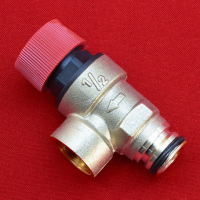 Safety valve in the heating system: types, purpose, diagrams and installation
Safety valve in the heating system: types, purpose, diagrams and installation 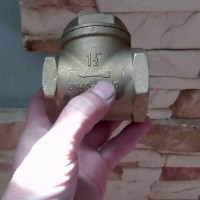 Check valve for heating: action, types, pros and cons + installation diagram
Check valve for heating: action, types, pros and cons + installation diagram 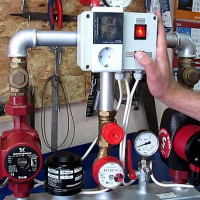 Water pump for heating: types, specifications and selection rules
Water pump for heating: types, specifications and selection rules 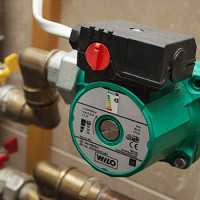 Selection of a circulation pump: device, types and rules for choosing a pump for heating
Selection of a circulation pump: device, types and rules for choosing a pump for heating 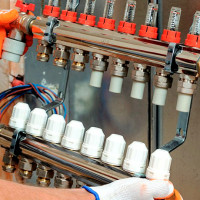 Collector for heating: principle of operation, installation and connection rules
Collector for heating: principle of operation, installation and connection rules 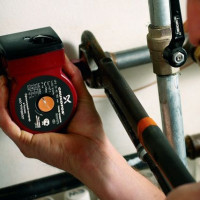 How to calculate a pump for heating: calculation examples and equipment selection rules
How to calculate a pump for heating: calculation examples and equipment selection rules  How much does it cost to connect gas to a private house: the price of organizing gas supply
How much does it cost to connect gas to a private house: the price of organizing gas supply  The best washing machines with dryer: model rating and customer tips
The best washing machines with dryer: model rating and customer tips  What is the color temperature of light and the nuances of choosing the temperature of the lamps to suit your needs
What is the color temperature of light and the nuances of choosing the temperature of the lamps to suit your needs  Replacement of a geyser in an apartment: replacement paperwork + basic norms and requirements
Replacement of a geyser in an apartment: replacement paperwork + basic norms and requirements
Guys, the time in the video is 9:25. Where will he take cold water to dilute the temperature of the coolant in the warm floor to the desired value, if you have a check valve there (he must take the water from the return for dilution)